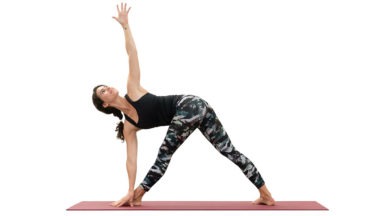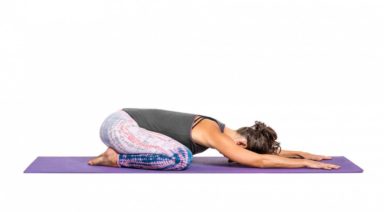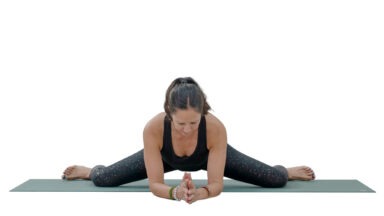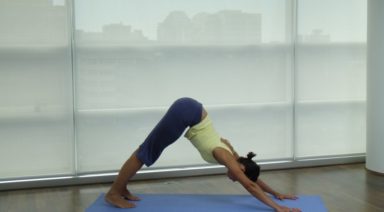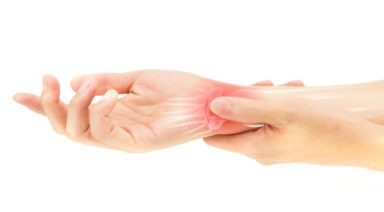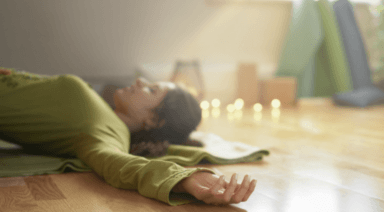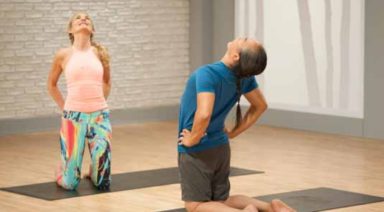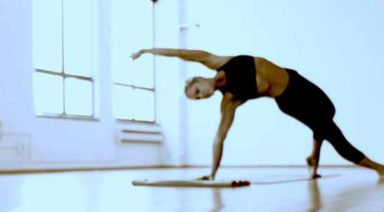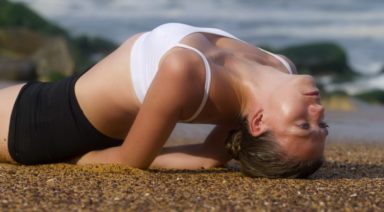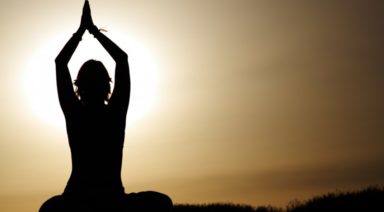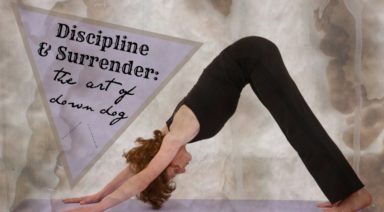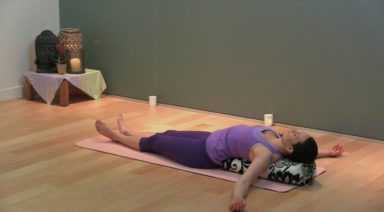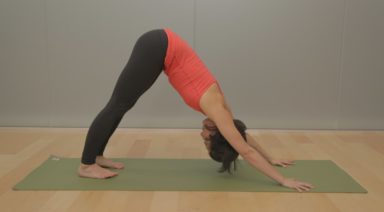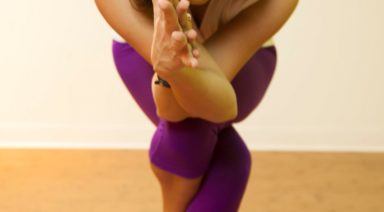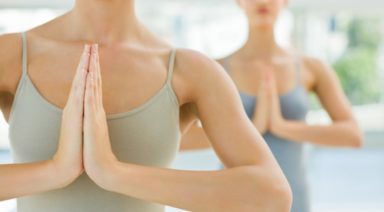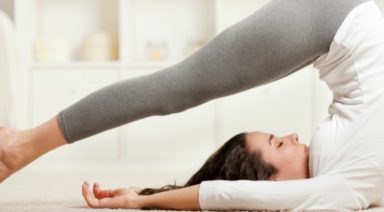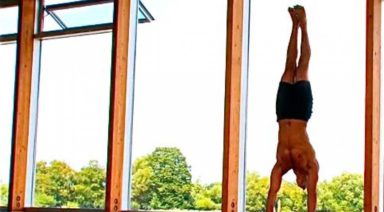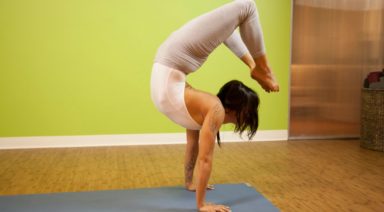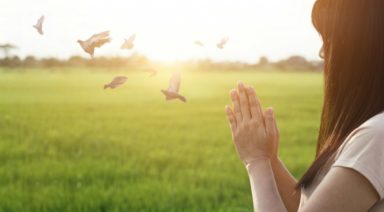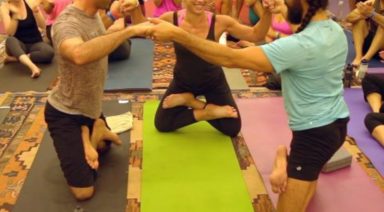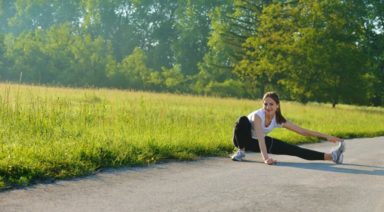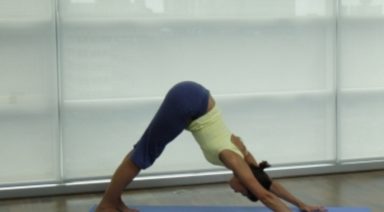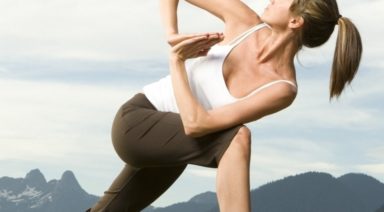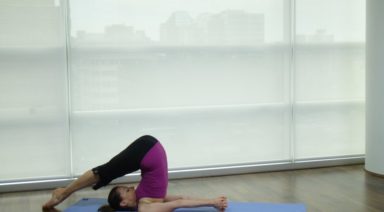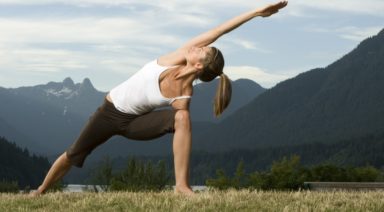Virabhadrasana III: Warrior III Pose
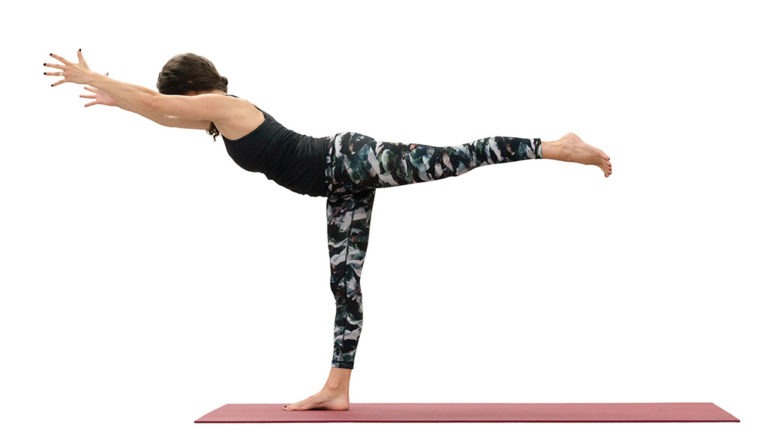
ADJUSTMENTS | BENEFITS | SEQUENCING | SANSKRIT | STEPS
Warrior III, or virabhadrasana (veer-ah-bah-DRAHS-ah-nah) III, is a challenging pose of balance and strength.
Philosophy + Origin
A fierce warrior, Virabhadra is often depicted as having a thousand heads, eyes, and feet. Draped in the skin of a tiger, this warrior wields a thousand clubs. In Virabhadra’s origin story, he is created from a single dreadlock from Shiva’s head, a manifestation of the rage he feels upon feeling like his true love has died. The shape of virabhadrasana III comes from this story, the moment when Virabhadra beheads the king Daksha and extends forward to place the head on a stake.
Despite the outward appearance and violent origin, this powerful pose is actually a great reminder of our own inner strength and the measures we would take in the name of true love.
ADJUSTMENTS/MODIFICATIONS:
- Shoulder modification: Rather than stretching your arms forward, reach your arms by your sides.
- Chair: Place your hands on a chair to assist with balance.
STEP-BY-STEP:
- Begin in a high lunge with your right foot forward and hands together at the center of your chest.
- Lean forward and shift your weight into your right foot until your left foot hovers off the ground.
- Straighten both legs as much as is comfortable. Extend the ball mound of your left foot back behind you and reach your chest forward.
- Press your standing foot firmly into the ground.
- Keep your hips level to the ground.
- When you feel relatively steady, reach your arms out in front of you to create one long line from your left foot to your fingertips. Face your palms toward each other and hug your forearms toward each other.
- Stay in the posture for 3-5 breaths, then gently release to standing. Repeat on the other side.
PREPARATORY POSES:
- Warrior I | Virabhadrasana I
- Cobra pose | Bhujangasana
- Chair pose | Utkanasana
SEQUENTIAL POSES:
- Pyramid pose | Parsvottanasana
- Half splits pose | Ardha hanumanasana
- Full splits pose | Hanumanasana
COUNTER POSES:
- Standing forward fold | Uttanasana
- Half pigeon pose | Eka pada rajakapotasana
SANSKRIT:
- Virabhadra = the name of Shiva incarnated as a fierce warrior
- Asana = pose
PHYSICAL BENEFITS:
- Strengthens ankles, legs, shoulders, and back.
- Tones the abdomen and core.
- Improves posture.
ENERGETIC BENEFITS:
- Creates a sense of power.
Legal Disclaimer Before participating in any exercise program or using any fitness products or services that may be described and/or made accessible in or through the Gaia Website and/or the Services, you should consult with a physician or other healthcare provider. Read more about Gaia’s Terms Of Use.
Parivrtta Trikonasana: Revolved Triangle Pose

ADJUSTMENTS | BENEFITS | SEQUENCING | SANSKRIT | STEPS
Parivrtta trikonasana (par-ee-VRIT-tah trik-cone-AHS-anna) is a great counterpose to its expansive sibling, utthita trikonasana (extended triangle). Stretching your spine and releasing tension in your chest and shoulders is a great antidote to a long work day.
Philosophy + Origin
As the more feminine version of utthita trikonasana, revolved triangle reminds us that there are always two sides to every coin — the dark to the light, the cold to the hot, the feminine to the masculine, the stillness after the movement. Reflecting on the differences and similarities between the two versions of triangle pose can help you find balance between two apparent opposites. Although feminine and masculine might seem like night and day, there’s a place in the middle where the two always meet.



